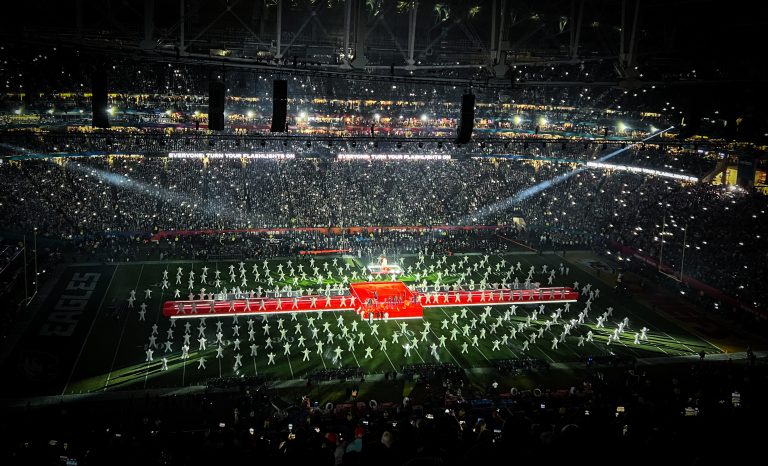Super Bowl LVIII is only a few days away and there is so much to explore for any business journalist as the event isn’t just one of the world’s most watched annual sporting events but also a massive – and multifaceted – business venture. Last year we shared some of the angles journalists could explore, including how the Super Bowl impacts the local economy. This year, here are two more business angles to explore: sports gambling in Las Vegas and who gets paid for the halftime performance.
Sports gambling in Las Vegas
The Super Bowl is being held this year in Las Vegas — the gambling capital of the U.S. — for the very first time. Even though the NFL has embraced sports gambling the past couple of seasons, Commissioner Roger Goodell has made it clear that players and employees are barred from placing bets during the week to “avoid even the appearance of improper conduct.”
The memo, sent to all 32 teams, includes rules for owners, executives, coaches, football and media personnel, and office staff in addition to the players. The policy even discourages casino play for all team personnel and bans employees from the two participating teams from even entering a casino or sportsbook until after the game is over.
The NFL updated its gambling policy last September after suspending multiple players for gambling during the 2022 season. The changes increased penalties for betting on NFL games, but decreased the penalty for betting on non-NFL games while on team property – players are allowed to bet on non-NFL games outside of team facilities.
Even though sports gambling was legal in Las Vegas long before it became legal in other states, it also has the strictest rules regarding what kind of wagers can be placed. In general, wagers must be limited to what happens on the field. Even the sidelines are off-limits: Vegas doesn’t allow betting on what color of Gatorade will be dumped on the winning coach’s head. Very few states allow any type of subjective betting and those are very limited.
This means that sportsbooks are unable to entice Swifties to bet on whether Taylor Swift will attend the game, but that hasn’t stopped sportsbooks from creating Swift-themed props including a “Tight End vs. Pop Star” prop that asks whether Kelce will have more receptions in the game than Swift’s 10 platinum albums.
The halftime performance
As a recent Country Living article pointed out, “one thing hasn’t changed since the first halftime show in 1960: performers don’t get paid.” Even though the NFL and Apple Music (this year’s halftime sponsor) won’t pay the actual performers, they do cover expenses and production costs, which can be as much as $13 million according to a Reuters report in 2020.
Most news reports focus on the exposure aspect of performing on the stage watched by 100+ million viewers and the increased music sales that inevitably follow – Rhianna’s digital song sales increased 390% the day after her Super Bowl appearance last year. Usher, this year’s headliner, is also partnering with the NFL’s longstanding licensees — Mitchell & Ness, New Era, Riddell, and Wilson Sporting Goods — to create and sell a line of merchandise celebrating the upcoming performance.
One aspect that is often overlooked is the 2,000-3,000 people who are paid to create and produce the actual show, from the light crew to the people setting up and dismantling the stage in a very short period of time. This can also include backup singers, musicians, and dancers that help make the show what it is. The amount of planning and detail that has to go into producing a 13-minute live show is unreal and the crew begins working on the set as early as September. Even though the main performer may be getting paid only in exposure, the rest of the crew does get paid for their hard work.







